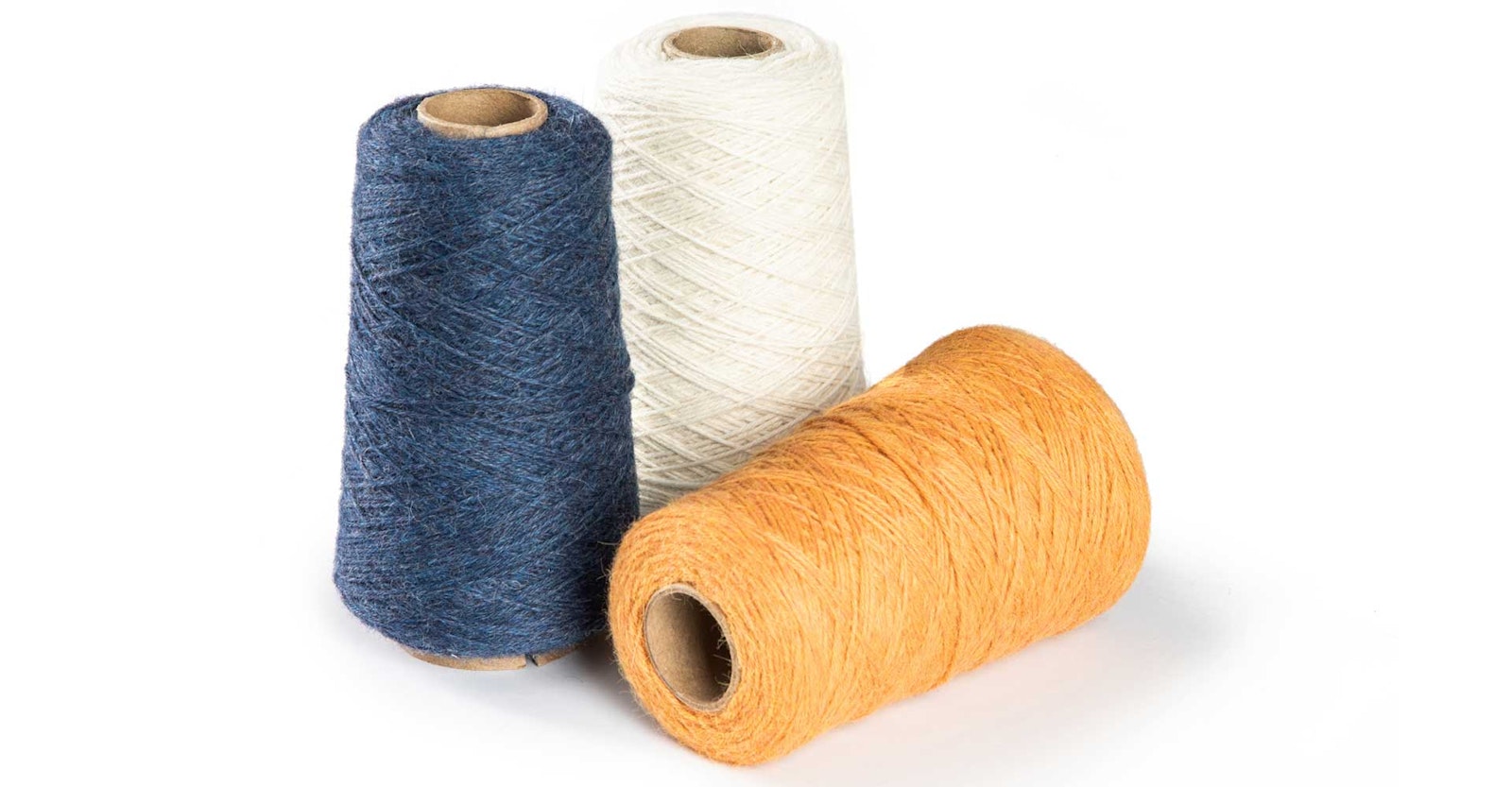When discussing anything fancy, my mother routinely quoted Chaucer’s “pretty is as pretty does” idiom from “The Wife of Bath’s Tale.” Most often, she was talking about horses or dogs and describing how something could be gorgeous on the outside but finicky, problematic, and high maintenance on the inside. It would be easy to draw similar parallels with the stunningly beautiful Ode, a 4/9 baby alpaca from Gist Yarn, but that would be a mistake.
I have used Ode as both warp and weft on multi-shaft, rigid-heddle, and rising- and sinking-shed looms, and with steel, wire, and Texsolv heddles. Not once have I experienced a broken warp end, fraying selvedge, or errant knot in the middle of a cone. Ode is at once luxurious and stalwart. I describe it as the golden retriever of yarns—steady, soft, and comforting.
Ode is an airy, round, and lofty yarn that shines when sett loosely and beat lightly, giving the yarn room to bloom during wet-finishing. Just be aware that the ends will fluff in water if not secured with a hem or twisted fringe. I handwashed most of the samples in cool water with Eucalan, a no-rinse wool wash; rolled them in a towel to remove excess moisture; and laid them flat to dry. The last two samples I handwashed in hot water before manually fulling them for 5 minutes.
Ode comes in 16 colors, with only 2 blues but good ranges for gradations in reds, greens, and neutrals. The colors are mélanges, meaning that if you look closely at the fibers, you will see flecks of several colors that, when combined, create hues of tremendous richness and depth. The yarn has a halo, but I’ve not found it to interfere with my shed—even when unweaving. Because of alpaca’s lack of memory, Ode is not particularly elastic on the loom. I did not find much dimensional difference in the samples under tension versus off the loom; the greatest shrinkage occurred during wet-finishing.
This yarn weaves up into the most spectacular scarves, shawls, and throws. If I sewed, I’d be tempted to make a long tunic or vest but would combine Ode with another yarn, such as a thinner wool, to reduce the density and give it a little more memory.
THE YARN
4/9 Ode Alpaca Weaving Yarn; Gist Yarn; 1,118 yd/lb (615 yd/8.8 oz) 100% baby alpaca; 16 colorways.
Plain weave
Warp and weft: Obsidian.
Setts: 10 epi; 10 ppi.
Shrinkage in length: 6%.
Shrinkage in width: 12%.
I wove the first three samples on a rigid-heddle loom. With Ode, I vacillate between 8 and 10 ends per inch (epi) for plain weave and find that I opt for 10 epi more often than not. I wove a large shawl at 8 epi that bloomed beautifully and draped like silk; however, weaving it required extra attention at the loom because the weft moved around in the cloth as it came over the front beam. Off loom, I used a blunt tapestry needle to straighten the worst-offending weft picks, and the remaining picks sorted themselves out during wet-finishing. I find that 10 epi weaves much more consistently, and the finished hand is also lovely‚ just not quite as buttery soft as at 8 epi—but you’d only know that holding them side by side. I suggest trying both setts and picking the one that best suits your weaving style and desired cloth.
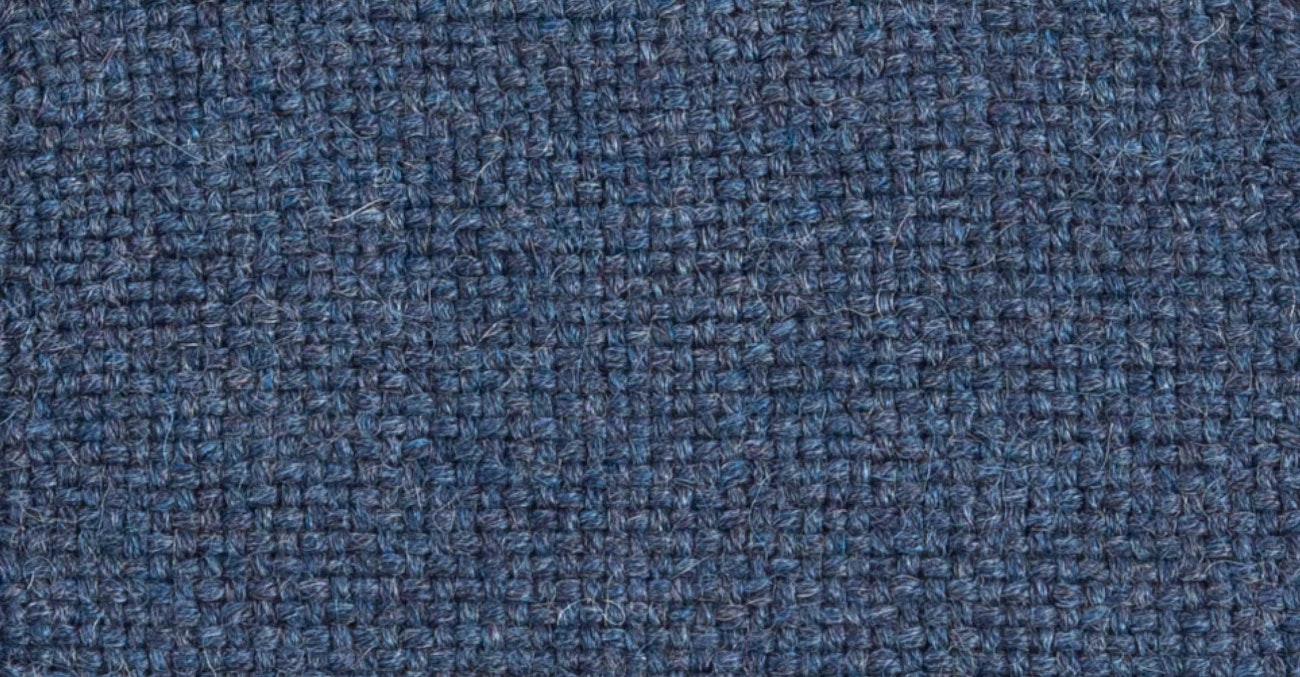
Plain weave
Plain weave with color-and-weave
Warp and weft: Cloud and Agate.
Setts: 10 epi; 9 ppi.
Shrinkage in length: 11%.
Shrinkage in width: 10%.
Despite having a slight halo and multiple colors in the fiber, Ode renders crisp definition that makes it wonderful for color-and-weave, log cabin in this case. I chose my go-to plain-weave sett but lightened up the beat just a touch to 9 picks per inch (ppi) and found what I feel is the sweet spot between ease of weaving and drape. A weaver could easily spend a winter making log-cabin or shadow-weave scarves and never get bored.
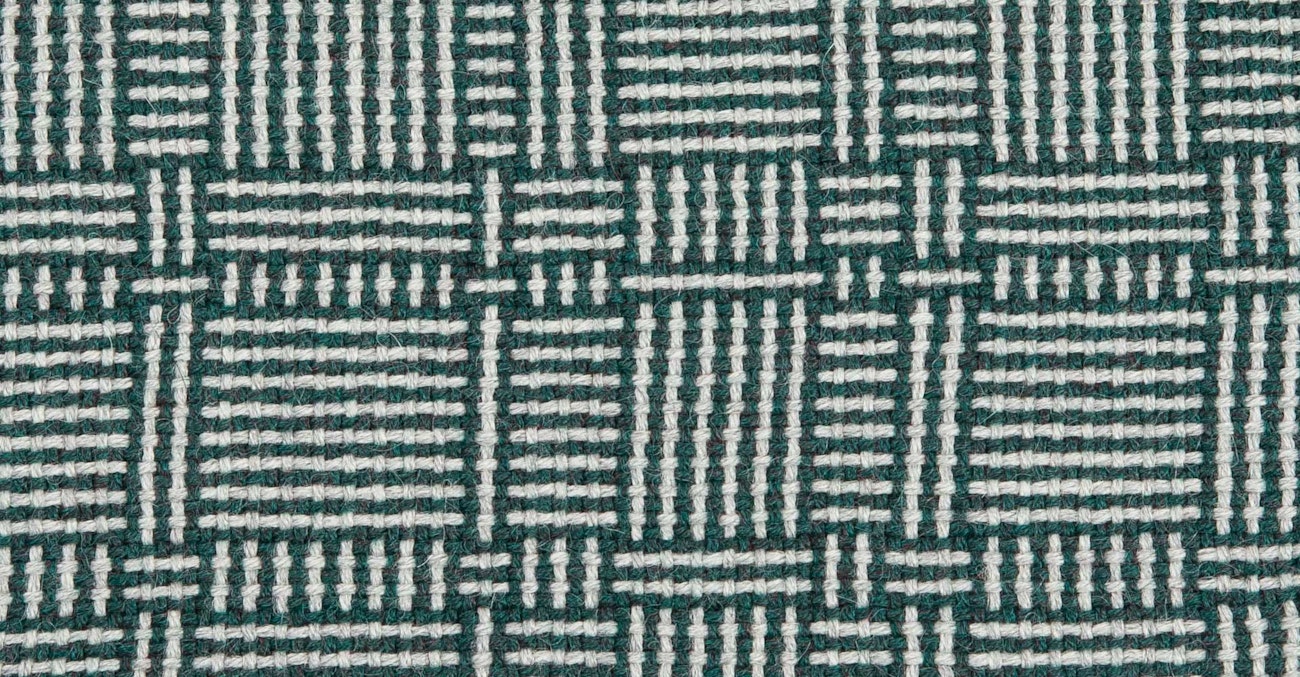
Plain weave with color-and-weave
Swedish lace
Warp: Sunflower.
Weft: Cream.
Setts: 10 epi; 8 ppi (blended plain weave and lace).
Shrinkage in length: 11%.
Shrinkage in width: 15%.
As an animal fiber, Ode has enough “grabbiness” to keep lace floats secure and less vulnerable to snagging and pulling. The floats not only stand out visually but create a beautiful, cushioned texture against a plain-weave background. A lace motif like the one shown here would be stunning as a reversible, allover design or as a minimal border for a scarf, shawl, or throw.

Swedish lace
M and W, 2/2 twill
Warp: Shadow.
Weft: Cream.
Setts: 12 epi; 12 ppi.
Shrinkage in length: 14%.
Shrinkage in width: 11%.
2/2 twill sett at 12 epi not only weaves quickly and consistently, but it creates a slightly thicker, pillowy cloth that begs to be made into a “snuggle-up-with-a-good-book” couch throw.
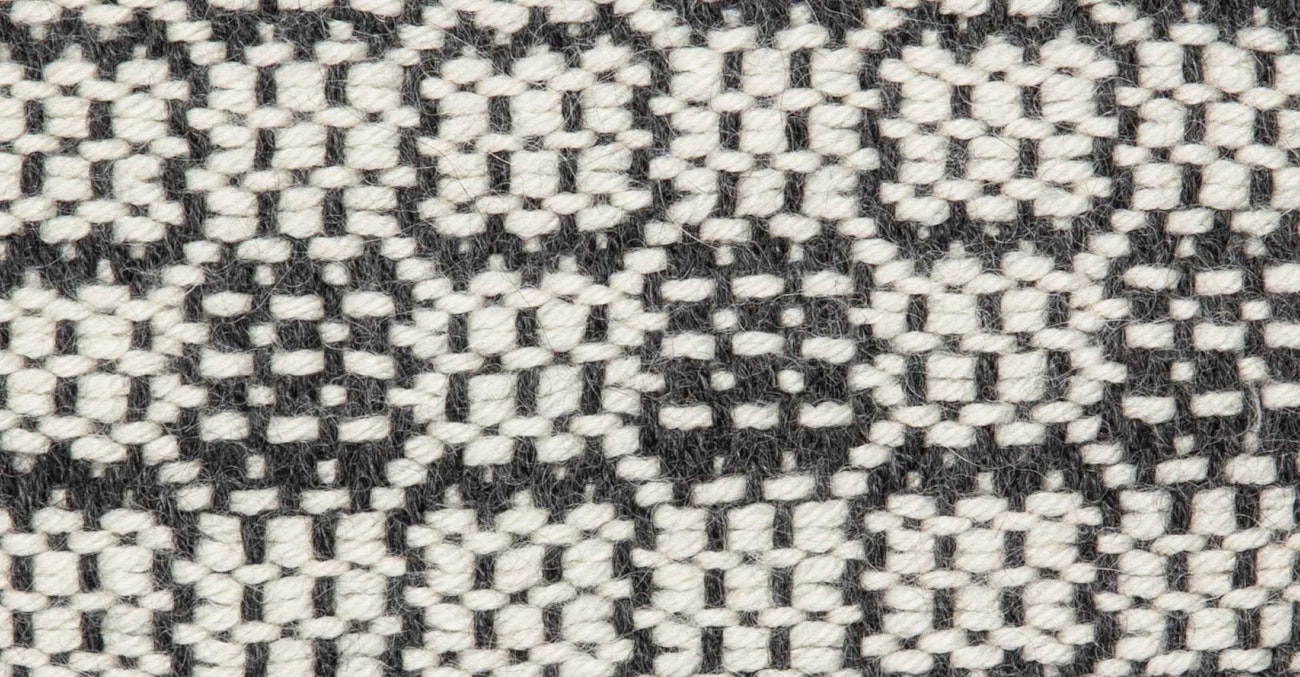
M and W, 2/2 twill
Summer and winter
Warp: Obsidian.
Weft: Straw (bricks and Os treadling) and Cream (Xs and dukagang treadling).
Setts: 10 epi; 15 ppi (half tabby, half pattern).
Shrinkage in length: 10%.
Shrinkage in width: 6%.
I love the rhythmic nature of pattern-pick/tabby-pick treadling, but the lazy part of me prefers to use one yarn for warp, tabby, and pattern, which is what I did for this summer and winter sample. Using one yarn throughout yields a smoother, less-textured cloth than had it been woven in the traditional way. The density of my beat varied quite a bit, from 14 to 18 ppi, with my favorite being 15 ppi, which hit a nice balance between soft hand and sturdy fabric. It would make a fabulous coverlet, blanket, or heavy winter shawl.
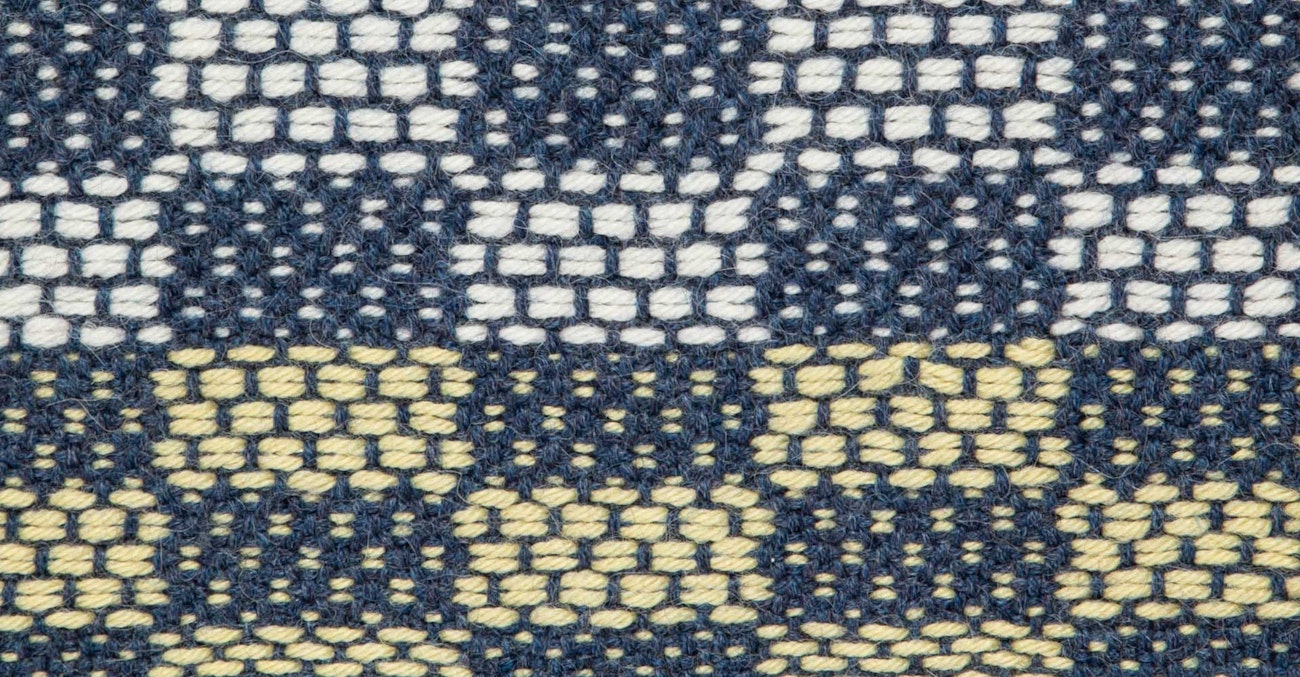
Summer and winter
Five-Thread huck
Warp: Obsidian.
Weft: Cream.
Setts: 10 epi; 10 ppi.
Shrinkage in length: 14%.
Shrinkage in width: 12%.
Alpaca is one of those fibers you want to touch, and adding a textured weave
structure to it makes it even more alluring. I predict a huck lace scarf or shawl at these setts will soon become one of your favorites. Warp and weft floats are delightful to weave in Ode, and they lighten the denser plain-weave sett such that the hand of the fabric feels more like it was woven at 8 epi.
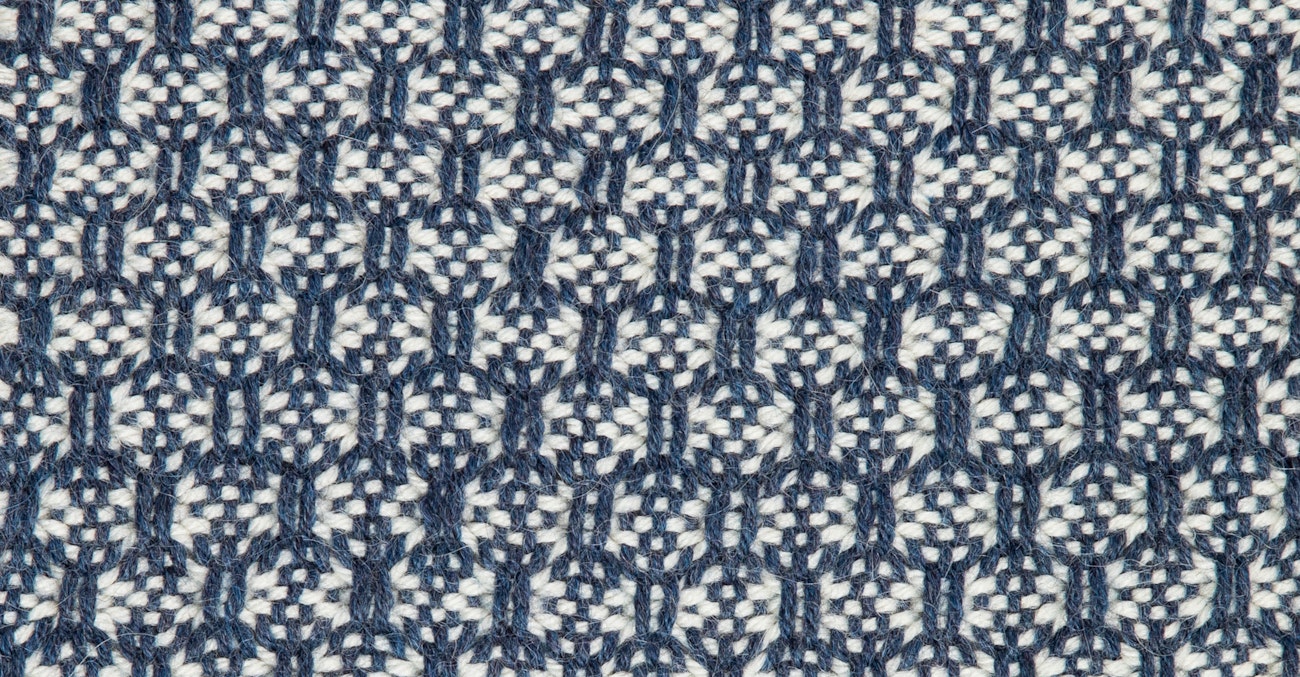
Five-thread huck
Honeycomb
Warp: Obsidian.
Weft: Straw.
Setts: 10 epi; 12 ppi (10 of plain-weave background, 2 of doubled outline pick).
Shrinkage in length: 13%.
Shrinkage in width: 16%.
Honeycomb takes texture up a notch and shows off how much potential Ode has for
deflected weaves. The thickness of the cloth would make any garment extra cozy, and the floats, both front and back, all feel stable enough to use in a throw or a scarf. The depth of the honeycomb pockets relative to the floats and outline picks is amazing—like the depth and breadth of potholes on the Mass Pike.
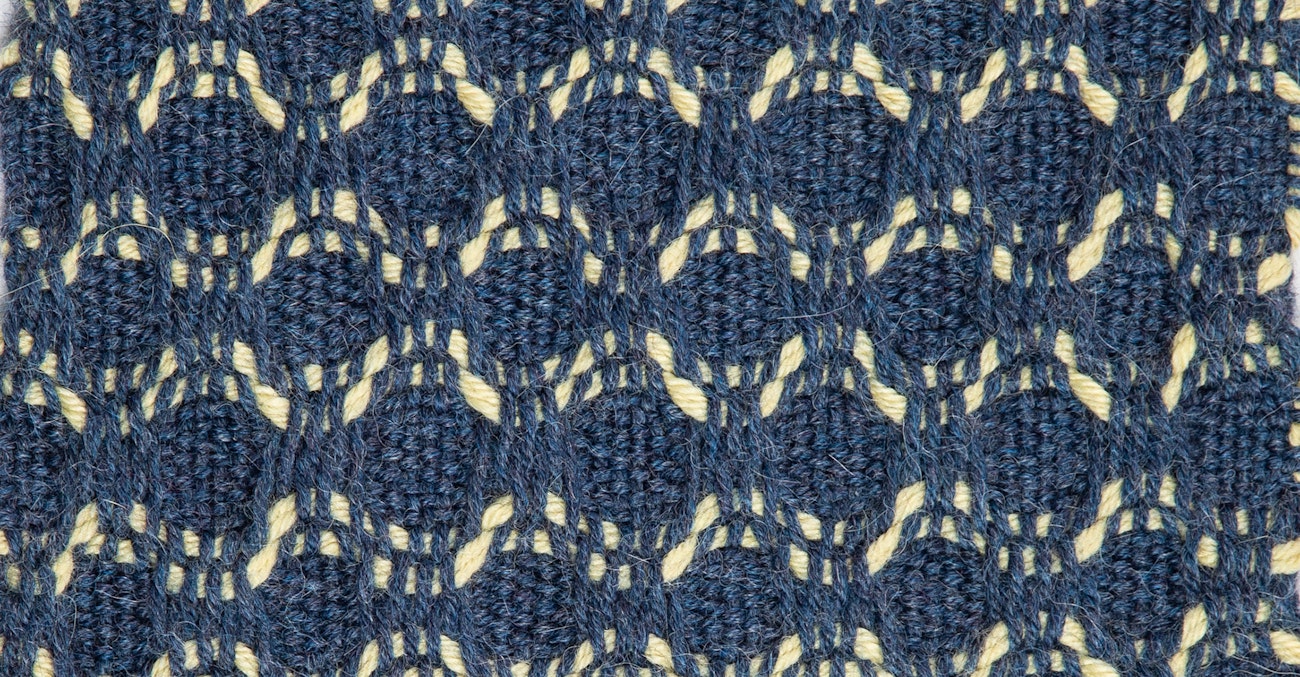
Honeycomb
Variable denting and beat
Warp: Obsidian.
Weft: Straw.
Setts: 5, 10, and 20 epi; 5, 8, and 12 ppi.
Shrinkage in length: 14%.
Shrinkage in width: 7%.
While I never had a breakage issue with Ode, I was a little nervous about how it would behave sett closer together in the reed than usual and woven with a firmer beat. Although I was not able to get 20 ppi, the yarn held up like a champ: no fraying, no splitting, and no breaking. Wet-finishing by hand in hot water and agitating for about 5 minutes fulled this sample into supersoftness. I found cramming and spacing it in the reed and beating it similarly creates interesting optical patterns when woven with a contrasting weft, and I believe that this fabric would make a beautiful garment or throw.
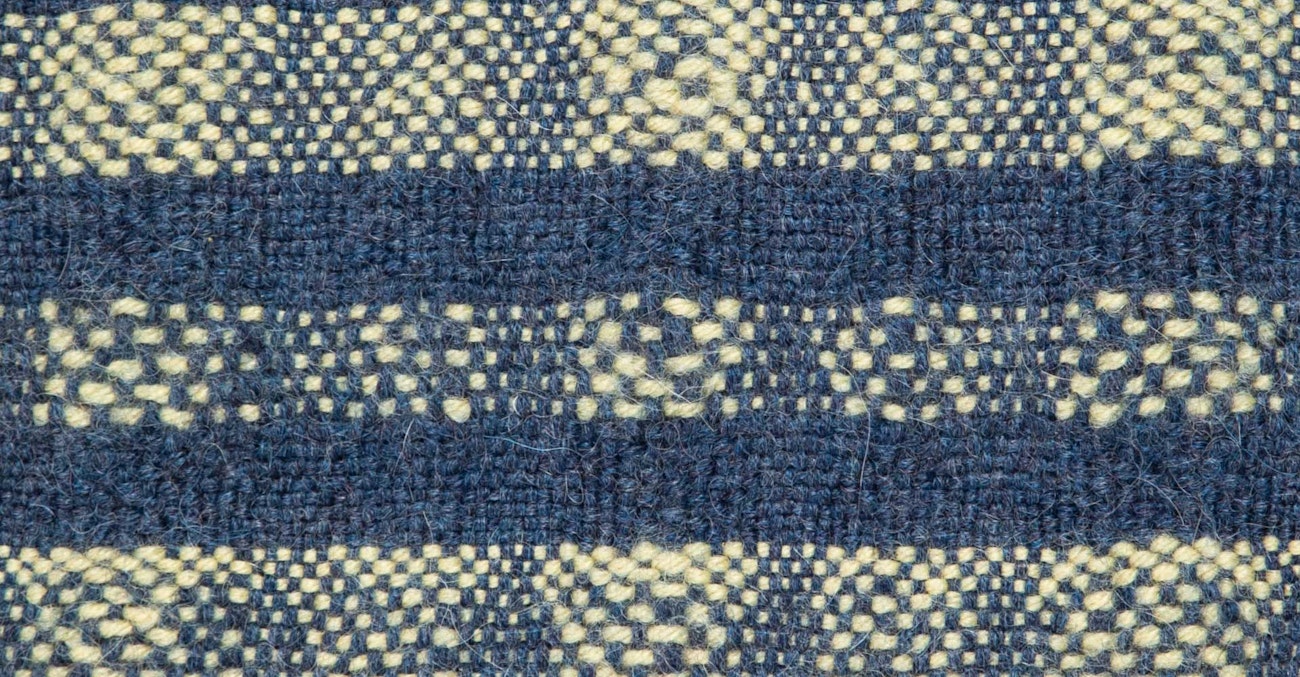
Variable denting and beat
Crammed and spaced in warp and weft
Warp and weft: Obsidian.
Setts: 20, 0 epi; 12, 0 ppi (crammed and spaced).
Shrinkage in length: 11%.
Shrinkage in width: 8%.
For the final sample, I shifted to cramming and spacing the warp ends, and leaving empty dents and gaps in my beat, hoping to get a cloth of little windows after fulling. The edge threads of each crammed section, both warp and weft, migrated into the open spaces and deflected a bit, creating rounded orbs. This wasn’t my goal, but it was a happy accident. I love the look and the hand and believe this would make a terrific scarf. After 5 minutes in a hot-water, agitated wash, the fabric looked like it was on the verge of puckering, so with further fulling, the texture would likely become even more exquisite.
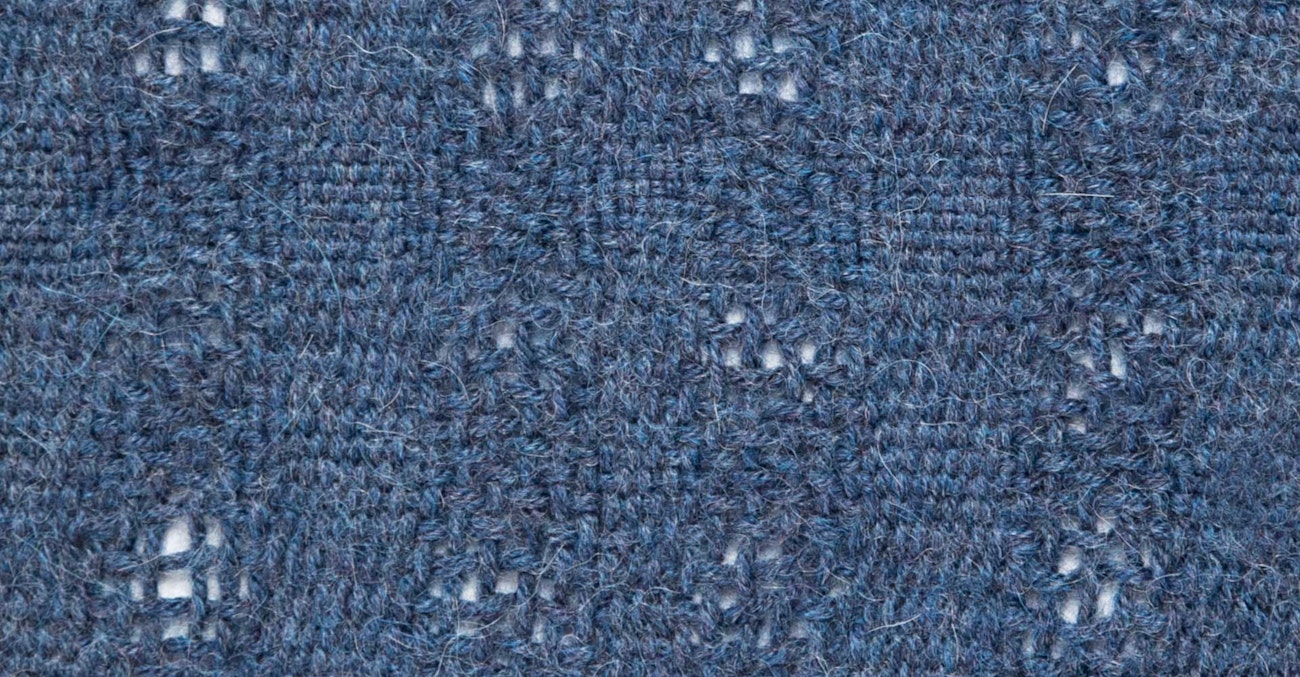
Crammed and spaced in warp and weft
Final Thoughts
There is no question that Ode is a fancy yarn. Alpaca is a luxury fiber that can stop some weavers from using on their loom out of fear that it might be fragile or difficult to work with. But whether you are a master weaver or a novice, I encourage you to try it. Ode is soft yet strong, gorgeous, and forgiving—a pretty yarn, with a great “personality.”
CHRISTINE JABLONSKI has capitulated to the idea that stash is the fiber equivalent of a gas—it expands to occupy all available space.

